Become the Off-Road Hero Every Group Needs
In the world of off-roading, your rig’s capabilities matter—but your crew matters more. When the trail gets tight, rocky, or off-camber, your spotter becomes your most valuable tool. And in Virginia, with its dense forests, narrow ridge climbs, rock gardens, and water crossings, learning to spot properly can make or break the success (and safety) of a trail ride.
Whether you’re navigating steep ledges on Flagpole, maneuvering around trees at Potts Mountain Jeep Trail, or squeezing through rock corridors on Second Mountain, knowing how to guide a friend through a tight section is an off-road skill everyone should learn.
This article will walk you through:
- What a spotter’s job really is
- The best hand signals to use
- Communication tips (especially when it’s loud)
- Where to stand (and where NOT to)
- Tips for spotting in Virginia’s terrain
- Mistakes to avoid
- And how to become a trail asset, not a trail hazard
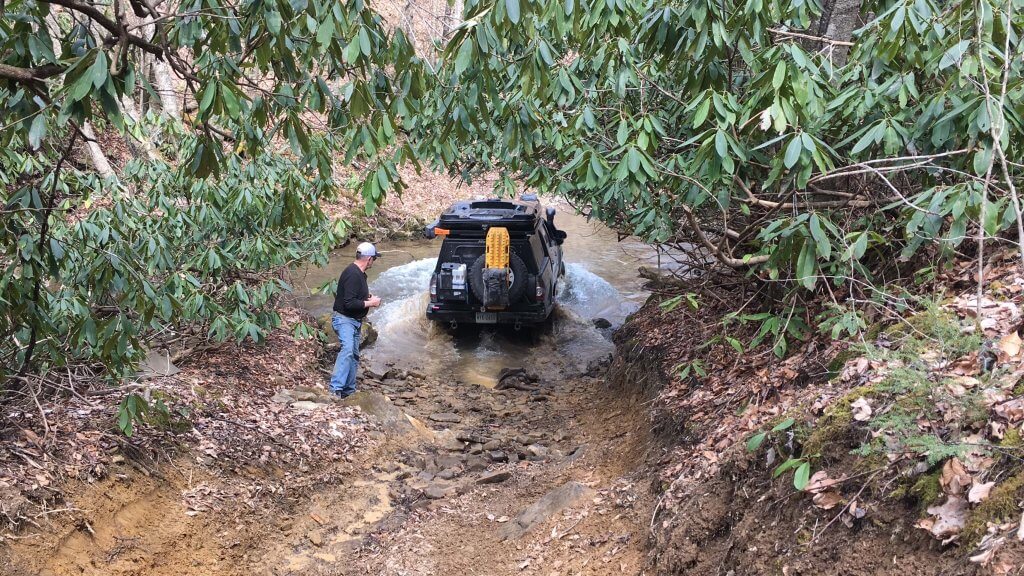
What Does a Spotter Actually Do?
Spotting is the art of guiding a driver through an obstacle or difficult terrain where they can’t see the full path ahead, especially in tight spaces. As a spotter, your goal is to:
- Keep the vehicle safe
- Help the driver’s tires stay on the ideal line
- Avoid damage to the undercarriage, body panels, or trail environment
- Prevent rollovers or stuck situations
In essence, you become the driver’s eyes where mirrors and cameras fall short.
When Do You Need a Spotter?
You don’t always need to hop out and guide someone. But here are common trail moments in Virginia where a spotter makes all the difference:
- Tight switchbacks and hairpin turns in the Blue Ridge Mountains
- Rock crawling sections like those on Flagpole or Shoe Creek
- Climbing steep, blind ledges at Potts Mountain
- Descending muddy or rutted hill sections after rain (very common in VA!)
- Threading between tight trees with minimal clearance
- Navigating loose shale or scree hills in Southwest VA
- Water crossings like Broad Run, especially when murky
If you’re ever unsure, stop and spot. It’s always better to get out and guide than to rely on hope and horsepower.
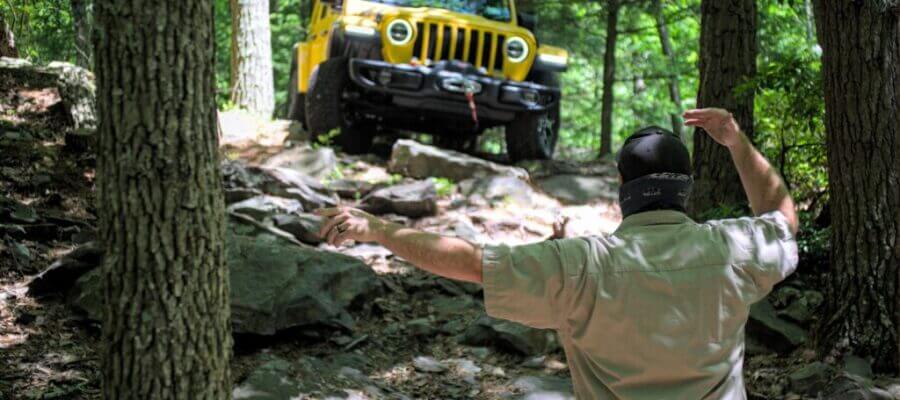
Basic Spotting Hand Signals (Keep It Simple)
It’s loud out there. Engines are roaring, tires are slipping, and wind may be howling through the hollers. That’s why clear, simple, visual cues are key.
Here are universally accepted hand signals all off-roaders in Virginia should learn:
| Signal | Meaning |
|---|---|
| Stop | Arms crossed in an “X” above your head |
| Come Forward | Palms facing you, waving toward your body |
| Back Up | Palms facing the rig, waving away from your body |
| Turn Driver (Left) | Left arm pointing left with right arm waving across chest |
| Turn Passenger (Right) | Right arm pointing right with left arm waving across chest |
| Slow Down | Palms facing down, moving downward repeatedly |
| One Tire at a Time | Hold up a single finger pointing at the wheel needing attention |
| Level/Flat | Palm held flat, parallel to the ground, to calm down throttle or stabilize |
Tip: Avoid “thumbs up” unless you mean stop and hold position—some people confuse it with “you’re clear,” which can cause miscommunication.
Where Should a Spotter Stand?
This is one of the most overlooked (and dangerous) parts of spotting. Position yourself where:
- You can see the tires clearly
- The driver can see you at all times
- You’re not in front of the vehicle’s path
- You can move quickly if needed
Usually, stand off to the front left or right corner of the vehicle at a 45-degree angle. That gives you visibility of the tires and line—and lets the driver glance out the window or windshield and keep eyes on you.
Never:
- Stand between the vehicle and an obstacle
- Turn your back to the rig
- Assume the driver saw you if they didn’t acknowledge your signal
If you’re going to move spots (example: from front-left to rear-right), tell the driver to stop, reposition, and reestablish eye contact before continuing.
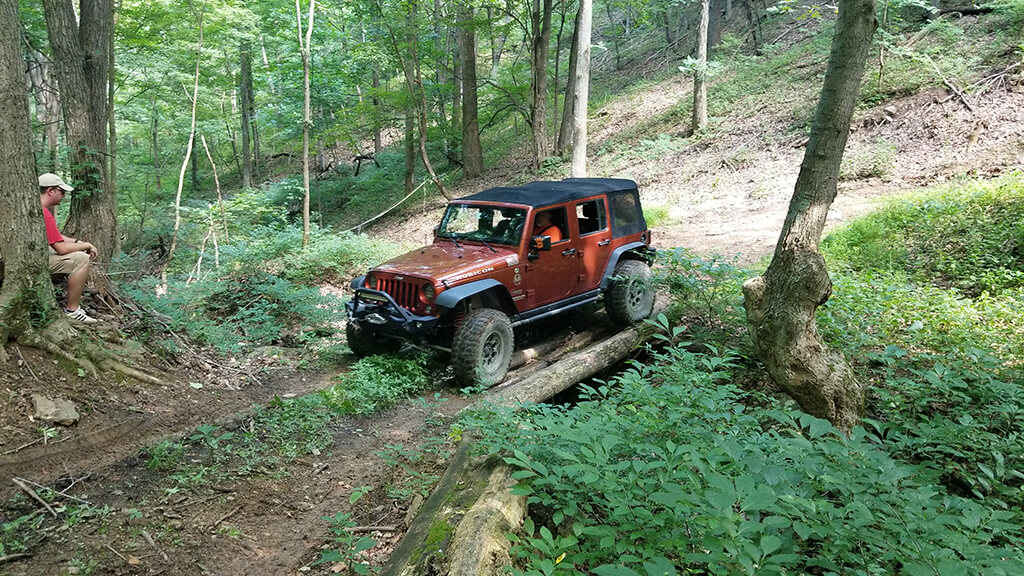
Use One Spotter Only
Too many cooks ruin the stew—and too many spotters ruin the trail.
Only one person should be guiding the driver. Others can assist, but don’t confuse the driver by yelling multiple instructions. If someone sees a danger the primary spotter missed, call a timeout and regroup. Otherwise, keep the flow clear and calm.
Voice vs. Hand Signals (And Radios)
Hand signals are ideal, but sometimes the trail is noisy or the driver is inside a hardtop Bronco with the AC and music on. If you can’t communicate clearly:
- Use handheld GMRS or FRS radios
- Use short, clear commands:
“Stop.”
“Come forward.”
“One foot driver.”
“You’re on the rock. Stay steady.” - Avoid long-winded explanations over radio unless absolutely necessary
VA Off-Road Tip: Carry basic handheld radios for group rides. They’re inexpensive and improve safety tenfold on longer trails like Peters Mill Run.
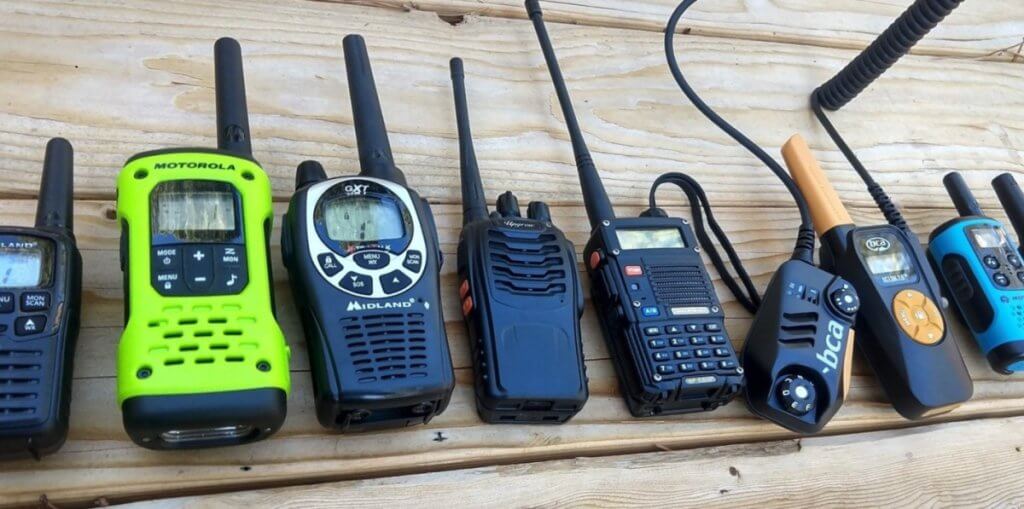
Spotting in Virginia-Specific Terrain
Virginia’s trails bring unique challenges—and opportunities—for great spotting. Here’s how to adapt:
1. Rock Gardens (Flagpole, Second Mountain, Shoe Creek)
- Use wheelbase awareness to guide drivers over the best line
- Spot slowly; let the rig crawl over rocks, one tire at a time
- Watch the undercarriage—belly scrapes and diff hits are common
- Stack rocks if needed to reduce trail damage (and protect vehicles)
2. Tight Forest Trails (Potts Mountain, Bald Mountain)
- Use “tree distance” awareness: spot the mirrors and roofline!
- Guide one corner of the vehicle through, then swing the rear
- Keep your ears open: trees scratch fast—warn quickly
- Know when to tell the driver to back up and realign
3. Off-Camber Sections (Mountain Lake Trail, Big Levels)
- Be ready to yell “STOP” immediately if it feels unsafe
- Watch both tire lift and body lean
- Walk ahead of time to find the flattest possible line
- Remind the driver: slow and steady prevents rollovers
4. Water Crossings (Broad Run, Shoe Creek)
- Walk the water first if depth is unknown
- Spot tire alignment before entry so the nose doesn’t dip
- Watch the current—slow and straight is better than speed
- Warn if tail starts drifting
Mistakes to Avoid
- Assuming they see you: Always wait for the driver to confirm with a nod or hand signal.
- Using unclear commands: “Go that way” while waving vaguely is dangerous.
- Standing in the danger zone: Stay clear of roll lines, tire bounce paths, and downhill runs.
- Yelling instead of guiding: Losing your cool helps no one.
- Not practicing: Spotting is a skill. Practice on easier trails before you need it in tough situations.
Pro Tip: Practice on Beginner Trails First
Before trying to spot on Potts Mountain or Rocky Run, get familiar with the basics on lighter trails like:
- Peters Mill Run – Great line-picking practice with mild rocks
- Bald Mountain – Forested trail with some clearance tests
- Shoe Creek – Small rock ledges, ideal for beginner spotters
Spotting Builds Trust—and Keeps the Sport Alive
The more you know how to spot, the better off our whole off-road community is. When you guide a friend over a tough trail:
- You keep their rig safe
- You help them build confidence
- You reduce trail damage and preserve access
- You prevent rollovers, recoveries, and breakdowns
Virginia’s trails demand respect—and spotting is a great way to show it.
Final Thoughts: Anyone Can Be a Great Spotter
You don’t need to be a pro driver or own a built rig to be a great spotter. In fact, some of the best off-roaders in the Commonwealth are the folks willing to hop out and help others through a tight turn, a big rock, or a tricky hill.
So next time you’re out with your club or a few friends and someone hesitates at an obstacle, step up, take a position, and say:
“I got you. Let me spot you through.”
That’s how you earn respect—and keep Virginia’s off-road community safe, skilled, and growing.
Want to learn more about off-roading skills in Virginia? Explore more articles and trails at VAOffRoad.org and consider becoming a member. Your support helps us keep trails open, safe, and maintained for future generations.

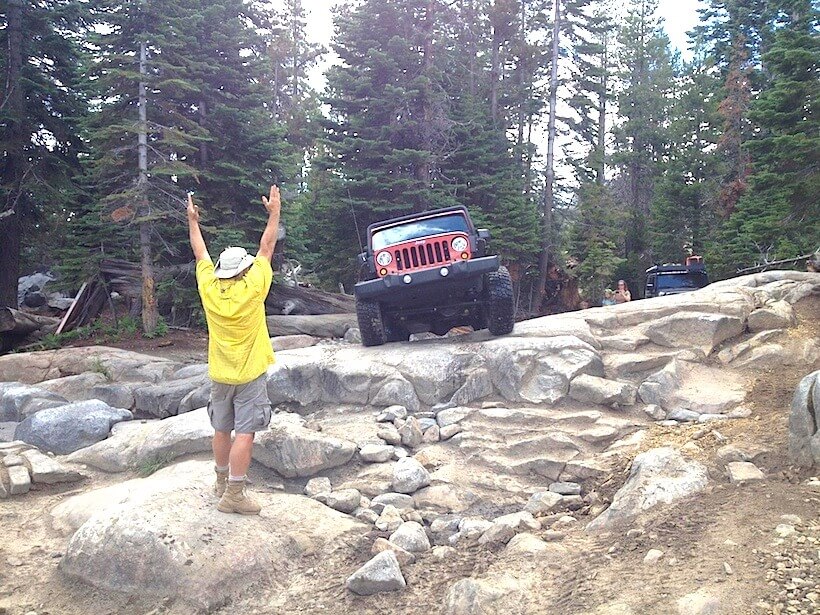

No responses yet